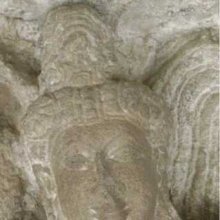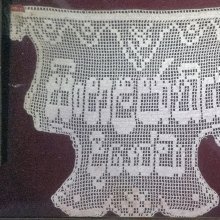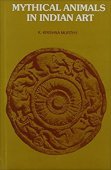Floral decoration, Floral design: 1 definition
Introduction:
Floral decoration means something in Hinduism, Sanskrit. If you want to know the exact meaning, history, etymology or English translation of this term then check out the descriptions on this page. Add your comment or reference to a book if you want to contribute to this summary article.
Images (photo gallery)
In Hinduism
Purana and Itihasa (epic history)
Source: Shodhganga: Elements of Art and Architecture in the Trtiyakhanda of the VisnudharmottarapuranaFloral Decoration (in Sanskrit: Puṣpāstaraṇa) was part of the “sixty four kinds of Art”, according to the Kamasutra of Vatsyayana.—Indian tradition, basically includes sixty four Art forms are acknowledged. The history of Indian Art covers approximately five thousand years which presents a rich and almost continuous record. The references of sixty four kinds of Kala (कला, kalā) are found in the Bhagavatapurana, Shaiva-Tantras, Kamasutra of Vatsyayana etc.

The Purana (पुराण, purāṇas) refers to Sanskrit literature preserving ancient India’s vast cultural history, including historical legends, religious ceremonies, various arts and sciences. The eighteen mahapuranas total over 400,000 shlokas (metrical couplets) and date to at least several centuries BCE.
See also (Relevant definitions)
Partial matches: Decoration.
Query error!
Full-text: Puvelai, Puccokkay, Puccelai, Puccalla, Puppotu, Pumporvai, Pushpastarana, Puntukil, Astarana, Puccattai, Vishnukanta, Kapota, Prastara, Kanculika, Varadaraja, Pu.
Relevant text
Search found 27 books and stories containing Floral decoration, Floral design, Floral decorations; (plurals include: Floral decorations, Floral designs, Floral decorationses). You can also click to the full overview containing English textual excerpts. Below are direct links for the most relevant articles:
Pallava period (Social and Cultural History) (by S. Krishnamurthy)
Head-dress of Women (a): Karanda-makuta < [Chapter 4 - Material Culture of the People]
Crowns for Men (b): Karanda-makuta < [Chapter 4 - Material Culture of the People]
Waist-band (Kati-sutra) < [Chapter 4 - Material Culture of the People]
The Structural Temples of Gujarat (by Kantilal F. Sompura)
Chapter 17 - Decorative Sculptures and their Structural Functions < [Part 2, Section 3: The Architectural Canons]
1.6. The Ceilings of the Mandapa < [Chapter 14 - The vertical parts of the Mandapa]
Chapter 18 - Sources of Canonical principles < [Part 2, Section 3: The Architectural Canons]
Cosmetics, Costumes and Ornaments in Ancient India (by Remadevi. O.)
1.3. Materials: Flowers < [Chapter 3 - Ornaments]
2.1. Various other Head Ornaments < [Chapter 3 - Ornaments]
2.4. Various other Neck Ornaments < [Chapter 3 - Ornaments]
Amaravati Art in the Context of Andhra Archaeology (by Sreyashi Ray chowdhuri)
Lower Kṛṣṇā Valley (24): Thoṭlakoṇḍa < [Chapter 2 - Amarāvatī and other Archaeological Sites of Ancient Andhra Pradesh]
The Dance of Siva < [October 1990 – December, 1990]
Rambling Thoughts on the Indian Art and < [April – June, 2008]
Hoysala Bequest To Indian Art < [January-February, 1930]
Buddhist iconography in and outside India (Study) (by Purabi Gangopadhyay)
Amitabha Mandala < [Chapter 3: Influence of Indian Buddhist Art on China and Korea]
Tathagata and his attendants < [Chapter 3: Influence of Indian Buddhist Art on China and Korea]
Amida Nyorai and attendants < [Chapter 4: Japanese Buddhist Iconography (a Comparative Study)]
Related products



